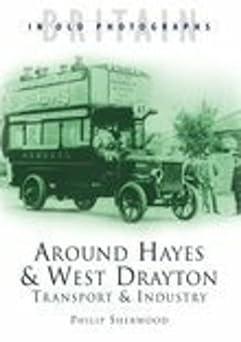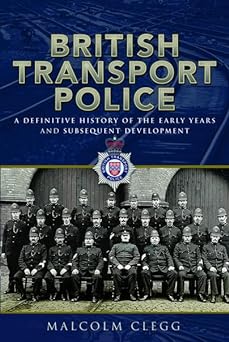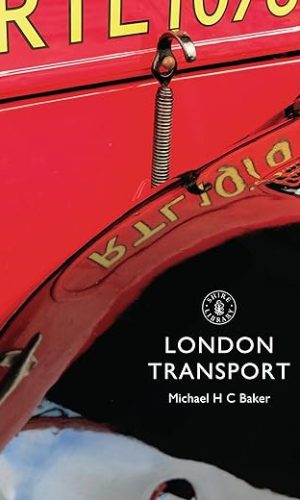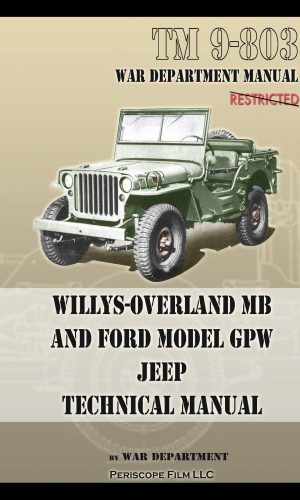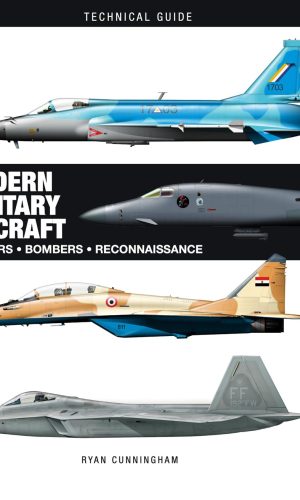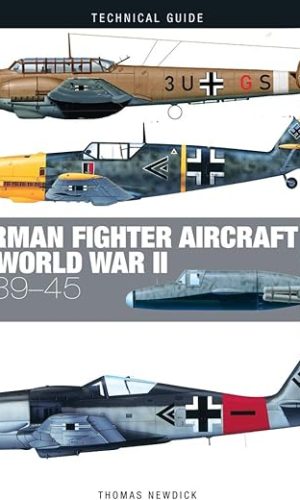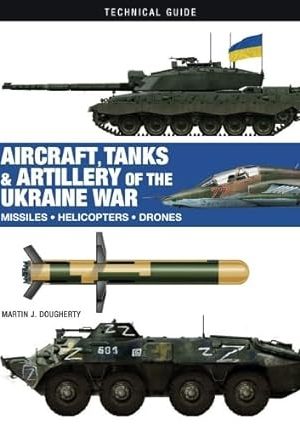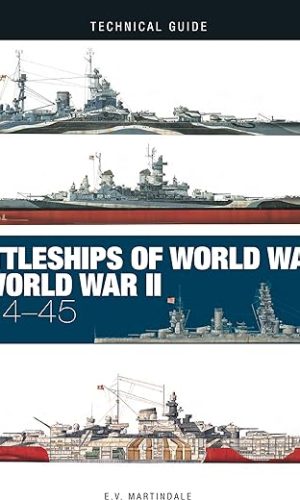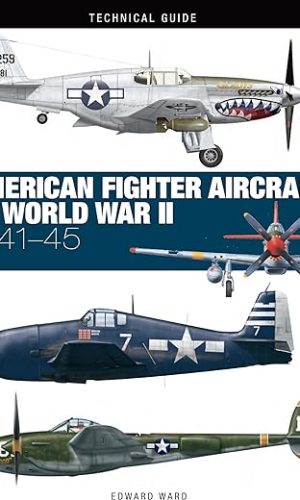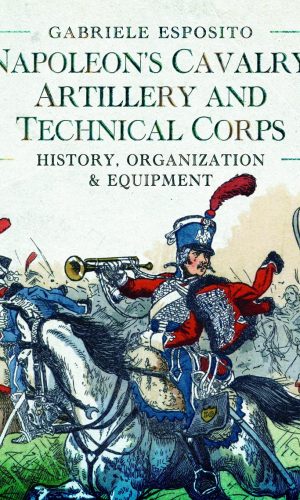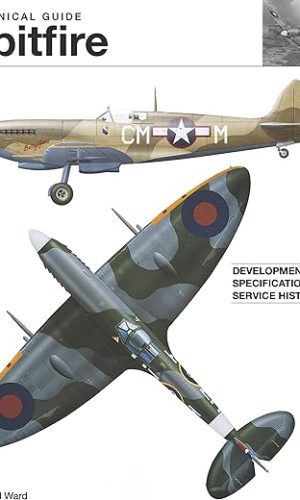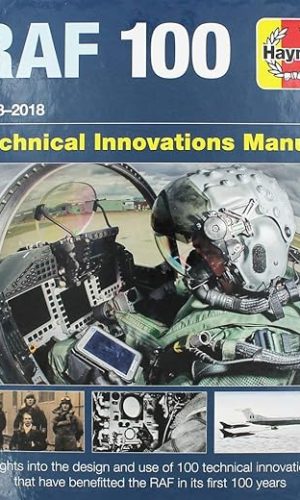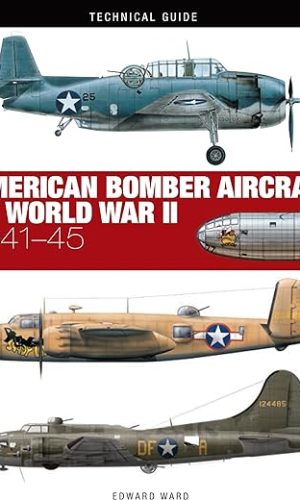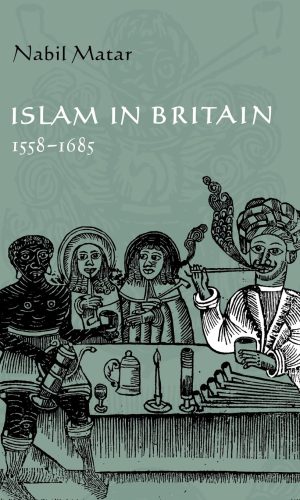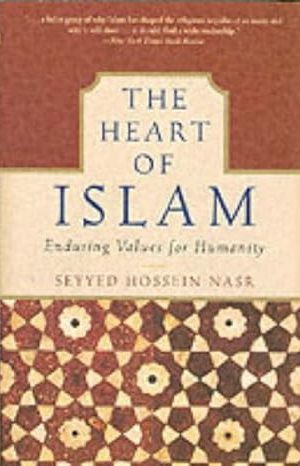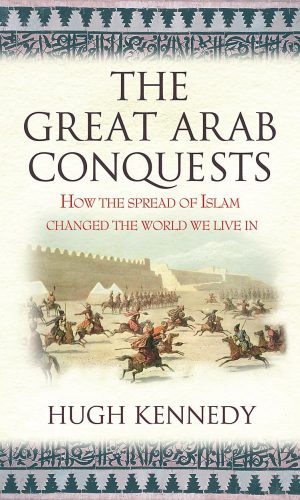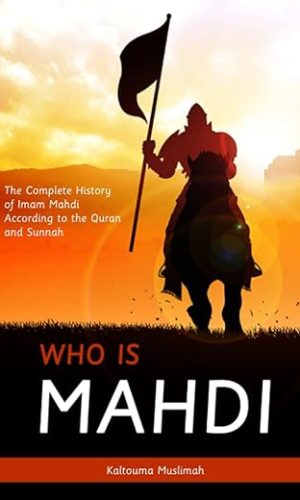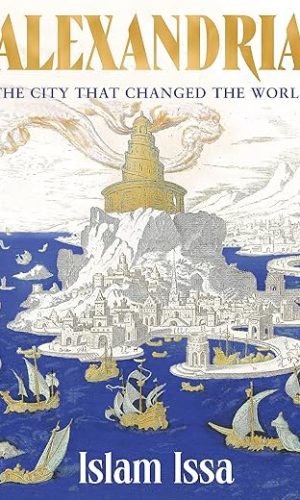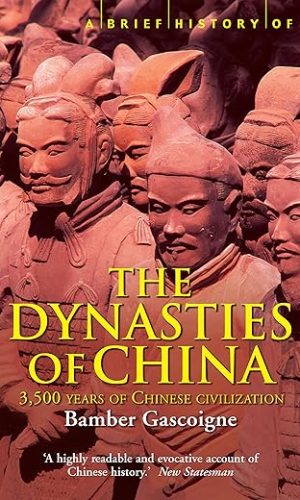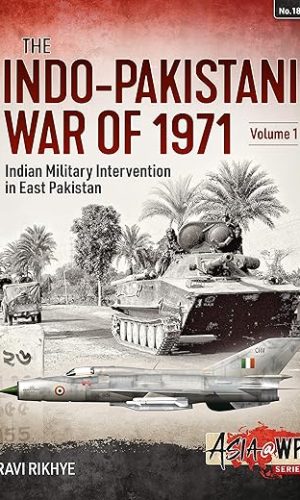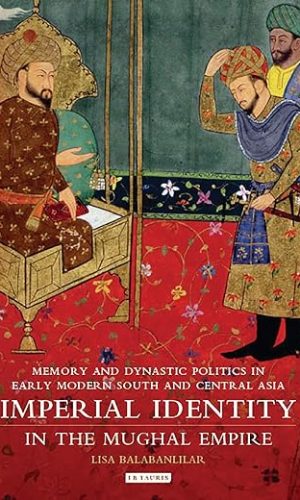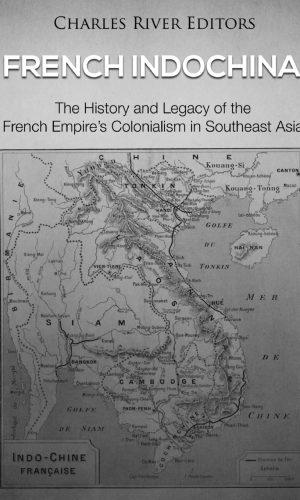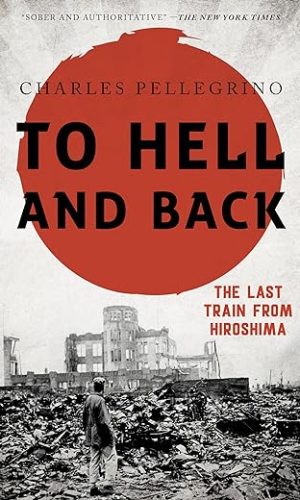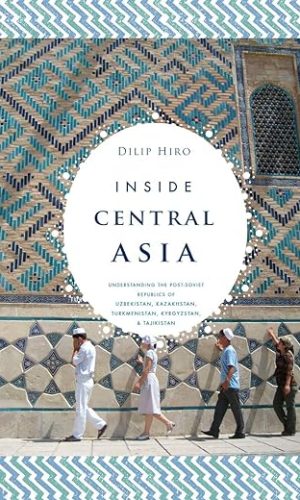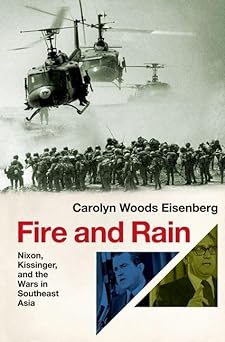-
London Transport Buses in the 1960s: A Decade of Change and Transition
Just as life in Britain generally changed dramatically during the 1960s, so did London Transport’s buses and their operations. Most striking was the abandonment of London’s trolleybuses, once the world’s biggest system, and their replacement by motorbuses. Begun in 1959 using surplus RT-types, it was completed by May 1962 using new Routemasters, designed specifically to replace them. They then continued to replace RT types, too. Traffic congestion and staff shortages played havoc with London Transport’s buses and Green Line coaches during the 1960s, one-man operation was seen as a remedy for the latter, shortening routes in the Central Area for the former. Thus the ill-fated “Reshaping Plan” was born, introducing new O.M.O. bus types. These entered trial service in 1965, and after much delay the plan was implemented from September 1968 onwards. Sadly, new MB-types, also introduced in the Country Area, soon proved a disaster! Unfortunately, owing to a government diktat, Routemaster production ended at the start of 1968, forcing LT to buy “off-the-peg” vehicles unsuited to London operation and their in-house overhaul procedures. The decade ended with the loss of LT’s Country Area buses and Green Line coaches to the National Bus Company. Photographer Jim Blake began photographing London’s buses towards the end of the trolleybus conversion programme in 1961 and continued dealing with the changing scene throughout the decade. He dealt very thoroughly with the “Reshaping” changes, and many of the photographs featured herein show rare and unusual scenes which have never been published before.Read more
£20.00£23.80 -
Around Hayes & West Drayton: Transport & Industry (Britain in Old Photographs)
Philip Sherwood’s collection of old photographs covers the development of transport and industry in an area that is now dominated by Heathrow Airport. This book explores the relationship between industrial development and transportation, and how these two themes have shaped Hayes and West Drayton.Read more
£9.40£12.30 -
United Counties Buses: A Fleet History, 1921-2014
United Counties Buses – A Fleet History begins by taking a brief look at the expansion of the United Counties Omnibus Company since its formation in September 1921 through to its demise in October 2014. The company acquired over fifty independent operators between 1922 and 1938 giving the company prominence in Northamptonshire and surrounding areas. May 1952 saw the fleet double in size with the acquisition of the Midland area of the Eastern National Omnibus Company, encompassing Bedfordshire, north Buckinghamshire and north Hertfordshire. The National Bus Company split United Counties into three operating companies in 1986, United Counties, Luton & District and MK Citybus, halving the size of the fleet. After being acquired by the Stagecoach Group in 1987, the company was largely left untouched. The main focus of the book looks at the vehicles operated by the company, covering the numerous types operated by United Counties themselves. The various liveries, both fleet and advertising liveries are also listed with in the book.Read more
£14.20£28.50United Counties Buses: A Fleet History, 1921-2014
£14.20£28.50 -
On the Road to Victory: The Rise of Motor Transport with the BEF on the Western Front
The story of a revolution in moving troops and supplies: “A rare gem that will fill a gap in your World War I library. Highly recommended.” —Indy Squadron DispatchThe Great War produced many innovations, in particular the spectacular development by the British and French armies of motor transport.
The age-old problem of moving soldiers and their supplies was no different in 1914 than it had been some 2,400 years ago, when the great Chinese military thinker Sun Tzu informed his readers that the further an army marched into enemy territory, the more the cost of transport increased, even to the point that more supplies were consumed by the transportation of men and their horses than was delivered to the troops.
Using many previously unpublished illustrations, including artists’ impressions, this book tells the story of the men and women who made motor transport work for the victorious British Army on the Western Front, so that in 1918, the humble lorry did indeed help propel the British Army forward on the road to victory.
Read more
£4.70 -
British Transport Police: A definitive history of the early years and subsequent development
This book traces the history of the British Transport Police, the National Police Force responsible for policing the railways of England, Scotland and Wales. The roots of the Force go back almost 200 years, starting with the development of the railways during the Nineteenth Century. Hundreds of railway companies were founded and although mergers and amalgamations took place, by the end of the century, well over 100 railway companies were operating, most of which employed railway policemen. The first railway policemen were recruited to work on the Stockton and Darlington Railway in 1826. Other railway companies quickly followed and by the 1850s, railway policemen with their smart uniforms and top hats were a common sight on Britain’s railways. During the Twentieth Century, railway companies continued to merge before being nationalised in 1948. The following year, the British Transport Commission (BTC) was created to oversee not only the newly nationalised railway network, but also the nation’s docks, shipping, inland waterways, road transport, road haulage and other companies. Also in 1949, the British Transport Commission Police (BTC Police) was created to take over the policing of these newly nationalised institutions. All the former railway, dock and canal police forces were then absorbed into the new BTC Police Force. The BTC was abolished in 1962, having incurred serious financial losses. The BTC Police was renamed the British Transport Police in 1963 and has continued to operate ever since. It no longer polices the docks, harbours and canals for reasons outlined in this book.Read more
£20.00£23.80 -
Buses in South and West Yorkshire
The Metropolitan counties of South and West Yorkshire have some of the most intensive bus operations outside Birmingham and London. The former metropolitan counties include considerable amounts of rural terrain alongside densely populated urban areas. Author Peter Tucker takes us on a lively photographic tour of the region’s transport scene. The journey takes us everywhere from genteel towns like Horsforth, Ilkley and Wetherby down to areas of heavy industry such as the Don Valley in Sheffield. In between we visit places as contrasting as Barnsley, Dewsbury, Pontefract and Rotherham and Swinton. Yorkshire’s cosmopolitan cities are not forgotten either, as we explore Bradford, Leeds, Sheffield and Wakefield. Featuring operators such as Arriva, First and Stagecoach, this publication also looks back to the 1990s with photographs depicting buses of the now defunct Yorkshire Rider, Yorkshire Traction and West Riding.Read more
£11.70£15.20Buses in South and West Yorkshire
£11.70£15.20 -
British Buses Since 1950: Trendsetting Designs (Britain’s Buses Series)
Bus design has certainly evolved in the seven decades since 1950, but it has not been a steady process. Advances in bus design have caused manufacturers to rush back to the drawing board for fear of being left behind. In 1950, the first of the new breed of underfloor-engined single-deckers appeared, and, just six years later, came the first rear-engined double-decker. Buses got longer, and one result in the 1960s was a rash of new rear-engined single-deck models. Efforts to make buses accessible for all passengers led to low-floor models in the 1990s, and then, in the 2000s, concerns about the environment prompted diesel-electric hybrid, gas, electric and hydrogen buses. Covering the designs that led the way with varying degrees of success over the past 70 years, and illustrated with over 170 colour images and period advertisements, this book showcases the good, the bad and the ugly of British bus design.Read more
£6.20 -
London Transport: 799 (Shire Library)
London Transport was created in 1933 to coordinate the shambolic, overlapping transport systems of the capital, and for decades has striven to meet the challenges of organising London travel. Now operating as Transport for London (TfL), it continues this demanding work. In this fully illustrated volume, Michael H. C. Baker presents the complete story of the organisation from its origins, through the upheavals of the Second World War, to TfL’s biggest modern project – Crossrail. Covering modes of transport including trams, trolleybuses, the iconic RT and Routemaster buses and the trains of the Underground, this is an essential guide to London’s world-famous transport operator.Read more
£8.50 -
TM 9-803 Willys-Overland MB and Ford Model GPW Jeep Technical Manual
Designated as a light truck, the Jeep was the primary four-wheel drive vehicle for the U.S. Army during WWII. The Jeep’s design owed a great deal to Karl Probst, a freelance designer employed by the American Bantam Car Co. Probst’s prototype “Blitz Buggy” was built in a mere 49 days. It clearly impressed the Army in head-to-head competition against a design submitted by Willys-Overland. However the Buggy’s engine failed to meet requirements, and the Army determined that Bantam could not produce the vehicle in quantity. As a result, the Army bought the Bantam design and asked both Willys and Ford to improve it. The Willys model MB, equipped with a L134 straight-4 “Go Devil”engine, was eventually accepted as the standard. Ford models built to Willys specifications were designated GPW (“G” for government vehicle, “P” designating the 80” wheelbase, and “W” indicating the Willys engine design). (Notably, the “GP” part of the designation is often misinterpreted to mean “General Purpose”, and some have suggested this is the reason the vehicle wasnick-named the “Jeep”. In reality it was probably named after a character in the Popeye cartoons). Roughly 640,000 Jeeps were built during WWII by Ford and Willys, and used on every front. Utilitarian, rugged, and easy to maintain, Jeeps saw service as scout cars, ambulances, firefighting vehicles, as tractors for artillery, and more. The vehicle so impressed war correspondent Ernie Pyle that he called it one of the “two most important pieces of non-combat equipment ever developed” — the other being the pocket stove. Jeeps remained in service for the U.S. military in Korea and in the Vietnam War. Created in 1944, this technical manual reveals a great deal about the Jeep’s design and capabilities. Intended as a manual for those charged with operation and maintenance, this manual shows many aspects of its engine, cooling, power, drive train and other systems. Originally labeled restricted, this manual was declassified long ago and is here reprinted in book form. Care has been taken to preserve the integrity of the text.Read more
£11.40 -
Small Unit Tactics and Raids: Two Illustrated Manuals (Small Unit Soldiers)
Small Unit Soldiers use complex tactics and maneuvers to successfully ambush and raid the enemy. Each stage of a successful mission, from infiltration to attacking, requires professional skills and knowledge to flawlessly execute.
Special Operations Veterans teach these skills from experience using real-life examples in this combined printing of the two manuals, Small Unit Tactics and Small Unit Raids. The topics include: Transportation to the Objective, React to Enemy Contact, Military Operations in Urban Terrain (MOUT), Close Quarters Battle (CQB), Exfiltration, and more.
This book has over 500 full color images. Diagrams and photographs are critical to learning physical movements and coordinated maneuvers. These images are perfect for visual learners who are tired of mind-numbing walls of text.
Read more
£66.50 -
Modern Military Aircraft (Technical Guides)
Illustrated with detailed artworks of modern military aircraft and their markings with exhaustive captions and specifications, Technical Guide: Modern Military Aircraft is an extensively researched review of the military aircraft deployed by the world’s air forces in recent conflicts in the Balkans, the Caucasus, Iraq, Afghanistan, Syria and elsewhere. Organised alphabetically by manufacturer, this book includes every type of aircraft in use in the world today, from the F-22 Raptor through the Dassault Mirage 2000 to the MiG-29 and Su-57. The book includes multirole fighters, ground attack aircraft, high-level bombers, reconnaissance aircraft, carrier aircraft, and unmanned drones. The guide is illustrated with profile artworks, three-views, and special cutaway artworks of the more famous aircraft in service, such as the F-15E Strike Eagle, Sukhoi Su-27 and Eurofighter Typhoon. Illustrated with more than 110 artworks, Technical Guide: Modern Military Aircraft is an essential reference guide for modellers and enthusiasts with an interest in modern military aircraft.Read more
£13.20£17.10Modern Military Aircraft (Technical Guides)
£13.20£17.10 -
German Fighter Aircraft of World War II: 1939-45 (Technical Guides)
Arranged by type, German Fighter Aircraft of World War II offers a highly illustrated guide to the most important fighters used by the Luftwaffe during the conflict. It features such classics as the Messerschmitt Bf 109 and Bf 110, the Heinkel He 100D-1 and the Focke-Wulf Fw 187 and Fw 190, as well as curiosities such as the Arado Ar 68F-1, Henschel Hs 123 and Heinkel He 51B biplanes. Late war innovations, such as the jet and rocket powered Me 262, Me 163 and Heinkel He 162, are also included. Most types are represented in numerous variants and with examples drawn from different theatres of the war. The book includes all the major fighters that served in the invasion of Poland, the defeat of France, the Battle of Britain, Operation Barbarossa, the war in the Mediterranean, the fighting on the Eastern Front and the Defence of the Reich. Each featured profile includes authentic markings and colour schemes, while every separate model is accompanied by detailed specifications. Packed with 110 full-colour artworks, German Fighter Aircraft of World War II is a key reference guide for military modellers and World War II enthusiasts.Read more
£13.00£16.10 -
Aircraft, Tanks and Artillery of the Ukraine War (Technical Guides)
Illustrated with accurate artworks of aircraft, armoured fighting vehicles, artillery and missiles, Aircraft, Tanks & Artillery of the Ukraine War is a detailed guide to all the weaponry currently being deployed in the War in Ukraine. The War in Ukraine is being fought using tanks, aircraft and artillery dating from the Cold War deployed alongside state-of-the-art weapons systems supplied by Western powers. Arranged chronologically by type, Aircraft, Tanks & Artillery of the Ukraine War offers a complete survey of the weapons deployed, from the venerable Ilyushin Il-76 strategic airlifter and T-64 medium tank to the latest American-made M142 HIMARS rocket artillery and the Bayraktar TB2 combat drone. The guide is illustrated with accurate profile artworks of fighter aircraft, bombers, attack helicopters, tanks, APCs, artillery systems, missile launchers and unmanned aerial vehicles from Russian, NATO, Turkish and other sources. Illustrated with more than 100 detailed artworks, Aircraft, Tanks & Artillery of the Ukraine War is an essential reference guide for those who want to understand the war being fought in Europe today.
Read more
£17.10 -
Battleships of World War I & World War II: 1914-45 (Technical Guides)
For centuries, battleships provided overwhelming firepower at sea. They were not only a major instrument of warfare, but a visible emblem of a nation’s power, wealth and pride. The rise of the aircraft carrier following the Japanese aerial strike on Pearl Harbor in 1941 highlighted the vulnerabilities of the battleship, bringing about its demise as a dominant class of warship.
This book offers a detailed guide to the major types of battleships to fight in the two World Wars. Explore HMS Dreadnought, the first of a class of fast, big-gun battleships to be developed at the beginning of the 20th century; see the great capital ships that exchanged salvos at the battle of Jutland, including the German battlecruiser Derfflinger, which sank the British battleship Queen Mary; find out about the destruction of HMS Hood, which exploded after exchanging fire with the Bismarck, which itself was sunk after a trans-Atlantic chase by a combination of battery fire and aircraft-launched torpedoes; and be amazed at the ‘super-battleship’ Yamato, which despite its size and firepower, made minimal contribution to Japan’s war effort and was sunk by air attack during the defence of Okinawa.
Illustrated with more than 120 vivid artworks and photographs, Technical Guide: Battleships of World War I and World War II is an essential reference guide for modellers and naval warfare enthusiasts.Read more
£13.70£17.10 -
American Fighter Aircraft of World War II: 1941-45 (Technical Guides)
The United States Army Air Force (USAAF) came into its own during World War II, building some of the premier fighters of the era. American Fighter Aircraft of World War II is a detailed guide to all the fighter aircraft types deployed by the USAAF and US Navy from 1941 to 1945.
Organised chronologically, this book includes all-time greats, such as the highly- adaptable P-51 Mustang bomber escort, the carrier-based F6F Hellcat – which outperformed the legendary Japanese A6M Zero fighter – and the Lockheed P-38 Lightning, with its distinctive twin-boom design; as well as lesser-known types, such as the Boeing P-26 Peashooter, the high-altitude Republic P-43 Lancer, and the Lockheed P-80 Shooting Star, the USAAF’s only operational jet fighter during the war. The entries are accompanied by exhaustive captions and specifications.
The guide is illustrated with profile artworks and three-views, as well as two-page dynamic artworks of some of the more famous aircraft in service, such as the P-40 Warhawk ground-attack variant, the twin-engined P-61 Black Widow night-fighter, and the robust P-47 Thunderbolt fighter-bomber.
Illustrated with more than 100 authentic artworks with accurate markings and camouflage, American Fighter Aircraft of World War II is an essential reference guide for modellers and military aviation enthusiasts.Read more
£13.70£17.10 -
Napoleon’s Cavalry, Artillery and Technical Corps 1799–1815: History, Organization and Equipment
The French Army of Napoleon could count on a brilliant mounted arm, consisting of three main types of cavalry: heavy, medium and light. The first, consisting of carabiniers and cuirassiers, was tasked with conducting frontal charges; the second, consisting of dragoons and lancers, could perform a variety of different duties; the third, consisting of hussars and mounted chasseurs, was tasked with scouting and skirmishing. The various regiments were all dressed in flamboyant uniforms and distinctive equipment. Perhaps more than any other troops they encapsulated the dash and glamour of Napoleonic warfare.Napoleon started his military career as an artillery officer and thus always paid great attention to the quality of his army’s artillery, which consisted of both foot and horse units. Several of Bonaparte’s greatest victories were achieved thanks to the superiority of his artillery, which was with undoubtedly the best in Europe during the period 1799-1815. In addition to cavalry and artillery, the author also covers the minor ‘technical corps’ of Napoleon’s army, such as the engineers and supply train. All are beautifully illustrated by the many color plates in this book, and their organization, equipment and tactics described.
Read more
£9.50 -
Small Unit Raids: An Illustrated Manual (Small Unit Soldiers)
Small Unit Raiders utilize advanced tactics known as Military Operations in Urban Terrain (MOUT) and Close Quarters Battle (CQB). These tactics prioritize swiftly moving into and out of enemy terrain to destroy, seize, and conduct information warfare.
Special Operations Veterans have written from their own experience with real-life examples, the step-by-step tactics that Soldiers must master. This manual explains in detail how to conduct a successful mission, from infiltration to raiding the enemy.
To completely explain every idea, this manual has over 320 full color images. Diagrams and photographs are critical to learning physical movements and coordinated maneuvers. These images are perfect for visual learners who are tired of mind-numbing walls of text.
Read more
£27.50 -
Spitfire (Technical Guides)
If asked to name a British aircraft of World War II, many people would pick the Spitfire. In production and frontline service throughout the war, this Supermarine design matured to become one of the greatest fighter aircraft of all time. By combining superb aerodynamics with one of the best aero-engines ever produced, R. J. Mitchell and his Supermarine team created a pure thoroughbred fighter which became a legend, especially during the Battle of Britain, the type’s baptism of fire. Much loved by its pilots, the Spitfire served as an interceptor, photo-reconnaissance, fighter-bomber and trainer, and it continued to serve in these roles until the 1950s. In total, there were 24 marks of Spitfire and many sub-variants.
Spitfire offers a compact illustrated guide to this most iconic of aircraft, with chapters divided by type and time period. Find out about the Mk VB, the most numerous and hardy model that served in every theatre of war, including flying with the Soviet Air Force on the Eastern Front; marvel at EN409, a Mk XI that achieved a speed record of 975km/h (606mph) in high-speed diving trials; learn about the Spitfire’s role in the Dieppe Raid in 1942, where the Mk Vs and Mk IXs flew over 2000 sorties in support of the landing; and discover well-known Spitfire pilots, included ‘Johnnie’ Johnson, who shot down 34 enemy aircraft and who flew the Spitfire right through his operational career from late 1940 to 1945.
Packed with 100 vivid artworks and photographs, Spitfire is a compact reference guide for lovers of classic aircraft and World War II aviation enthusiasts.Read more
£13.00£17.10Spitfire (Technical Guides)
£13.00£17.10 -
Royal Air Force 100 Technical Innovations Manual 2017 (Haynes Technical Innovations Manual)
On 1 April 2018 the RAF celebrates its centenary, marking 100 years since its creation in 1918 out of the merger of the Royal Flying Corps and Royal Naval Air Service. The RAF has always been at the forefront of technology, both as an innovator and as a user of innovations. To celebrate the RAF’s first 100 years, Jonathan Falconer showcases a top 100 technical innovations that have been used and/or devised by the Service over the past century, ranging from heated flying suits to radar; and from panel fasteners to the VTOL Harrier.Read more
£7.90£23.80 -
American Bomber Aircraft of World War II: 1941-45 (Technical Guides)
The United States built the best strategic bombers of World War II, and by the end of the conflict America’s bombers dominated the skies in both Europe and the Pacific. American Bomber Aircraft of World War II is a detailed guide to all the bombers deployed by the USAAF and US Navy from 1941 to 1945.
Organised chronologically, this book includes all the great types of the era, such as the B-17 Flying Fortress, which led the daylight bombing campaign against German industrial targets; the B-24 Liberator, which carried out the famous raid on the Ploesti oil refinery in Romania in 1943; the rugged Grumman TBF Avenger torpedo bomber, flown by US Navy pilots at the Battle Midway in that key turning point in the Pacific War; and the B-29 Superfortress, the aircraft most responsible for degrading Japan’s ability to wage war with their constant aerial attacks throughout 1944 and 1945.
The guide is illustrated with profile artworks and three-views, as well as two-page dynamic artworks of some of the more famous aircraft in service, such as the highly- adaptable B-25 Mitchell, which served in every theatre in a variety of roles, the Douglas Dauntless SBD naval scout plane, and the Martin B-26 Marauder, one of the fastest medium bombers of its era.
Illustrated with more than 100 authentic artworks with accurate markings and camouflage, American Bomber Aircraft of World War II is an essential reference guide for modellers and military aviation enthusiasts.Read more
£13.70£17.10 -
Islam in Britain, 1558-1685
This book examines the impact of Islam on Britain between 1558 and 1685. Professor Matar provides a perspective on the transformation of British thought and society by demonstrating how influential Islam was in the formation of early modern British culture. Christian-Muslim interaction was not, as is often thought, primarily adversarial; rather, there was extensive cultural, intellectual and missionary engagement with Islam in Britain. The author documents conversion both to and from Islam, and surveys reactions to these conversions. He examines the impact of the Qur’an and Sufism, not to mention coffee, on British culture, and cites extensive interaction of Britons with Islam through travel, in London coffee houses, in church, among converts to and from Islam, in sermons and in plays. Finally, he focuses on the theological portrait of Muslims in conversionist and eschatological writings.Read more
£36.10Islam in Britain, 1558-1685
£36.10 -
The Heart of Islam: Enduring Values for Humanity
As the specter of religious extremism has become a fact of life today, the temptation is great to allow the evil actions and perspectives of a minority to represent an entire tradition. In the case of Islam, there has been much recent confusion in the Western world centered on distorted portrayals of its core values. Born of ignorance, such confusion feeds the very problem at hand.
In The Heart of Islam one of the great intellectual figures in Islamic history offers a timely presentation of the core spiritual and social values of Islam: peace, compassion, social justice, and respect for the other. Seizing this unique moment in history to reflect on the essence of his tradition, Seyyed Hossein Nasr seeks to “open a spiritual and intellectual space for mutual understanding.” Exploring Islamic values in scripture, traditional sources, and history, he also shows their clear counterparts in the Jewish and Christian traditions, revealing the common ground of the Abrahamic faiths.
Nasr challenges members of the world’s civilizations to stop demonizing others while identifying themselves with pure goodness and to turn instead to a deeper understanding of those shared values that can solve the acute problems facing humanity today. “Muslims must ask themselves what went wrong within their own societies,” he writes, “but the West must also pose the same question about itself . . . whether we are Muslims, Jews, Christians, or even secularists, whether we live in the Islamic world or in the West, we are in need of meaning in our lives, of ethical norms to guide our actions, of a vision that would allow us to live at peace with each other and with the rest of God’s creation.” Such help, he believes, lies at the heart of every religion and can lead the followers of the Abrahamic religions (Judaism, Christianity, and Islam) as well as other religious and spiritual traditions to a new future of mutual respect and common global purpose.
The Heart of Islam is a landmark presentation of enduring value that offers hope to humanity, and a compelling portrait of the beauty and appeal of the faith of 1.2 billion people.
Read more
£5.70 -
The Great Arab Conquests: How the Spread of Islam Changed the World We Live In
A popular history of the Arab invasions that carved out an empire from Spain to China
Today’s Arab world was created at breathtaking speed. Whereas the Roman Empire took over 200 years to reach its fullest extent, the Arab armies overran the whole Middle East, North Africa and Spain within a generation. They annihilated the thousand-year-old Persian Empire and reduced the Byzantine Empire to little more than a city-state based around Constantinople. Within a hundred years of the Prophet’s death, Muslim armies destroyed the Visigoth kingdom of Spain, and crossed the Pyrenees to occupy southern France.
This is the first popular English language account of this astonishing remaking of the political and religious map of the world. Hugh Kennedy’s sweeping narrative reveals how the Arab armies conquered almost everything in their path. One of the few academic historians with a genuine talent for story telling, he offers a compelling mix of larger-than-life characters, battles, treachery and the clash of civilizations.
Read more
£12.90£14.20 -
The Crucible of Islam
Little is known about Arabia in the sixth century, yet from this distant time and place emerged a faith and an empire that stretched from the Iberian peninsula to India. Today, Muslims account for nearly a quarter of the global population. A renowned classicist, G. W. Bowersock seeks to illuminate this obscure and dynamic period in the history of Islam―exploring why arid Arabia proved to be such fertile ground for Muhammad’s prophetic message, and why that message spread so quickly to the wider world. The Crucible of Islam offers a compelling explanation of how one of the world’s great religions took shape.
“A remarkable work of scholarship.”
―Wall Street Journal“A little book of explosive originality and penetrating judgment… The joy of reading this account of the background and emergence of early Islam is the knowledge that Bowersock has built it from solid stones… A masterpiece of the historian’s craft.”
―Peter Brown, New York Review of BooksRead more
£13.30The Crucible of Islam
£13.30 -
The Forgotten Slave Trade: The White European Slaves of Islam
A century before Britain became involved in the trans-Atlantic slave trade, whole villages and towns in England, Ireland, Italy, Spain and other European countries were being depopulated by slavers, who transported the men, women and children to Africa where they were sold to the highest bidder. This is the forgotten slave trade. Starting with the practice of slavery in the ancient world, Simon Webb traces the history of slavery in Europe and examines the experiences of those who were forcibly taken from their homes. He describes how thousands of European boys were castrated and then sold in Africa and the Middle East, and also explains how the role of the newly-independent United States helped to put an end to the trade in European and American slaves. He also discuss the importance of towns such as Bristol, which had been an important staging-post for the transfer of English slaves to Africa over 1,000 years before it became a major centre for the slave trade in the eighteenth century. Reading this book will forever change how you view the slave trade and show that many commonly held beliefs about this controversial subject are almost wholly inaccurate and mistaken.Read more
£11.60£14.20 -
Who is Mahdi: The Complete History of Imam Mahdi According to the Quran and Sunnah: 3 (Learn More about Islam)
How is the Imam Mahdi
This Book presents the complete history of Imam Mahdi according to the Quran and Sunna.Read more
£5.20 -
Slavery, Terrorism and Islam – The Historical Roots and Contemporary Threat
Dr. Peter Hammond’s bestselling book: SLAVERY, TERRORISM & ISLAM – The Historical Roots and Contemporary Threat is a fascinating, well illustrated and thoroughly documented response to the relentless anti-Christian propaganda that has been generated by Muslim and Marxist groups and by Hollywood film makers. As Karl Marx declared: “The first battlefield is the re-writing of History!” Slavery, Terrorism and Islam was first published in 2005 and quickly sold out. It earned Dr. Peter Hammond a death threat “Fatwa” from some Islamic radicals. We have included the story of that in an appendix of this book. Slavery, Terrorism & Islam sets the record straight with chapters on “Muhammad, the Caliphas and Jihad”, “The Oppression of Women in Islam”, “The Sources of Islam” and “Slavery the Rest of the Story”. With over 200 pictures, maps and charts, this book is richly illustrated. It consists of 16 chapters and 13 very helpful appendixes including demographic maps of the spread of Islam, a Glossary of Islamic Terms, a comparison of Muslim nations’ military spending vs. their national prosperity, a chart on how Jihad works depending on the percentage of Muslims in the population and guidelines for Muslim evangelism.Read more
£13.30 -
Alexandria: The City that Changed the World: ‘Monumental’ – Daily Telegraph
‘Monumental and vividly imagined . . . a fitting tribute to a city that has survived, changed and grown for so many centuries’
Daily Telegraph‘A cornucopia of fascinating details, every page revealing a new delight’
Paul Strathern, author of The Medici: Godfathers of the RenaissanceA city drawn in sand.
Inspired by the tales of Homer and his own ambitions of empire, Alexander the Great sketched the idea of a city onto the sparsely populated Egyptian coastline. He did not live to see Alexandria built, but his vision of a sparkling metropolis that celebrated learning and diversity was swiftly realised and still stands today.
Situated on the cusp of Africa, Europe and Asia, great civilisations met in Alexandria. Together, Greeks and Egyptians, Romans and Jews created a global knowledge capital of enormous influence: the inventive collaboration of its citizens shaped modern philosophy, science, religion and more. In pitched battles, later empires, from the Arabs and Ottomans to the French and British, laid claim to the city but its independent spirit endures.
In this sweeping biography of the great city, Islam Issa takes us on a journey across millennia, rich in big ideas, brutal tragedies and distinctive characters, from Cleopatra to Napoleon. From its humble origins to dizzy heights and present-day strife, Alexandria tells the gripping story of a city that has shaped our modern world.
‘A multifaceted history of an enthralling city’
Lloyd Llewellyn-Jones, author of Persians: The Age of the Great KingsRead more
£23.70£28.50 -
Muhammad Messenger of Allah
Kitab Ash-Shifa bi ta’rif huquq al-Mustafa, (Healing by the recognition of the Rights of the Chosen One), of Qadi ‘Iyad (d. 544H/1149CE) is perhaps the most frequently used and commented upon handbook in which the Prophet’s, may Allah bless him and grant him peace, life, his qualities and his miracles are described in every detail. Generally known by its short title, Ash-Shifa, this work was so highly admired throughout the Muslim world that it soon acquired a sanctity of its own for it is said: “If Ash-Shifa is found in a house, this house will not suffer any harm… when a sick person reads it or it is recited to him, Allah will restore his health.” Ash-Shifa gathers together all that is necessary to acquaint the reader with the true stature of the Prophet, may Allah bless him and grant him peace, with the esteem and respect which is due to him, and with the verdict regarding anyone who does not fulfil what his stature demands or who attempts to denigrate his supreme status – even by as much as a nail paring.
Read more
£20.90£39.90Muhammad Messenger of Allah
£20.90£39.90 -
A Brief History of the Dynasties of China (Brief History) (Brief Histories)
Although China’s great empire lasted for longer than any other, no country has suffered so great an imbalance between the fame of its art and obscurity of its history. The names of the great dynasties are familiar, yet who can actually locate a T’ang horse or a Ming vase in its social or cultural context?
By focusing on the key colourful characters of the eight major dynasties, Bamber Gascoigne brings to life 3500 years of Chinese civilization. His bird’s-eye view starts on the borders of myth. It moves swiftly on to the greatest achievements of language and thought, the cultural treasures and imperial palaces, wars won and lands lost to the Mongols, finally to arrive at the 1912 Revolution, which contained within it the seeds of Communism that ensured the overthrow of the last emperor. Via this portrait of an empire and its peoples he has opened the door to a world for too long inaccessible to the West.
Read more
£5.10£9.50 -
Modern Chinese Military Aircraft (Technical Guides): 1990-Present
Illustrated with accurate artworks of military aircraft and their markings, Modern Chinese Military Aircraft is a detailed guide to all the aircraft types deployed by the People’s Republic of China from 1990 to the present. Arranged chronologically by type, the book covers everything from the venerable Cold War era Chengdu J-7, a third-generation fighter still in service, to the J-10 ‘Vigorous Dragon’ multirole fighters that patrol the Taiwan Straits today. The guide is illustrated with accurate profile artworks of some of the best – and least – known aircraft, such as the Shenyang J-8 interceptor, which served in the late Cold War in great numbers and was a copy of the Soviet MiG-21; the anti-tank armed Harbin Z-9 helicopter; the Shenyang J-15 carrier-based fourth-generation multirole fighter; the Caihong 4 surveillance drone; and the latest Chengdu J-20. Illustrated with more than 100 detailed artworks, Modern Chinese Military Aircraft is an essential reference guide for modellers and enthusiasts of military aviation.
Read more
£17.10 -
Indo-Pakistani War of 1971: Volume 1: Birth of a Nation (Asia@War)
In 1947, India and Pakistan were partitioned by their former colonial ruler, Great Britain. A job that should have taken ten-years was done in a few months. Britain, drained by two world wars in 40-years, no longer had the will or the money to guide the subcontinent to a peaceful partition by consensus. More importantly, the subcontinent was impatient for Britain’s departure. The British left in haste, leaving unresolved the issue of Kashmir. This triggered five wars between the new states: 1947-48, 1965, 1971, 1999 and continuing insurgency/counterinsurgency that began in 1987. Two other potential wars were narrowly averted in 1987-88 and 2001-02, and a limited one fought in 1999. Since the basic issue remains unresolved, the next war may be only a matter of time.In 1970, East Pakistan voted for independence and armed rebellion. A quick and nasty counterinsurgency suppressed the rebellion. India, seizing the chance to change the balance of power, first backed East Pakistan, then on 21 and 22 November 1971 invaded with eight divisions. India planned also to attack West Pakistan to recover Kashmir, but at the last moment the offensive was called off due to Soviet pressure. Pakistan attacked pre-emptively, and an all-out war resulted. East Pakistan was overrun by India on 16 December; the US and Soviet forced a ceasefire in the West only a day later. For the first time in 800 years, a predominantly Hindu army defeated a Muslim army.
Through extensive use of official records and participant recollections, rare photography and authentic colour profiles, Ravi Rikhye tells the captivating story of the biggest military conflict fought between India and Pakistan to date, and the war that resulted in emergence of Bangladesh as an independent nation.
Read more
£13.70£19.00 -
Imperial Identity in the Mughal Empire: Memory and Dynastic Politics in Early Modern South and Central Asia (Library of South Asian History and Culture)
Having monopolized Central Asian politics and culture for over a century, the Timurid ruling elite was forced from its ancestral homeland in Transoxiana at the turn of the sixteenth century by an invading Uzbek tribal confederation. The Timurids travelled south: establishing themselves as the new rulers of a region roughly comprising modern Afghanistan, Pakistan and northern India, and founding what would become the Mughal Empire (1526-1857). The last survivors of the House of Timur, the Mughals drew invaluable political capital from their lineage, which was recognized for its charismatic genealogy and court culture – the features of which are examined here. By identifying Mughal loyalty to Turco-Mongol institutions and traditions, Lisa Balabanlilar here positions the Mughal dynasty at the centre of the early modern Islamic world as the direct successors of a powerful political and religious tradition.Read more
£19.00 -
The Khmer Empire: The History and Legacy of One of Southeast Asia’s Most Influential Empires
*Includes pictures
*Includes contemporary accounts
*Includes online resources and a bibliography for further reading
The Khmer Empire, also known as the Angkor Empire, was a powerful empire of Southeast Asia that was established in 802 CE and ended in 1431 with the invasion of the Siamese and abandonment of Angkor. The Khmer Empire was responsible for many of the historic monuments and temples found throughout the jungles of modern-day Cambodia, and also in other countries of Southeast Asia, all made possible by the fact the Khmer Empire reached across modern-day Cambodia, parts of Thailand, Laos, and Vietnam, making it a strategic trading partner with ships traveling from China and India.
Of all the architecture, the empire is best known for constructing Angkor Wat, one of the modern world’s greatest wonders. Known in English as Angkor Wat (“City Temple”), the gigantic complex was built by King Suryavarman II in the early 12th century to serve as the king’s state temple and capital city. Since it has remained so finely preserved, it has maintained religious significance for nearly 900 years, first dedicated to the Hindu god Vishnu, and then Buddhist. Understandably, it has become one of Cambodia’s most potent symbols and tourist attractions, and it even appears on the Cambodian national flag. Angkor Wat continues to fascinate the world, both due to its sheer grandeur and size, as well as its ornamental decorations both inside and out. With political strife in Cambodia having cooled, Angkor Wat is now a major tourist attraction, bringing upwards of over half a million foreigners per year, which accounts for over half of the nation’s tourists.
As a result, the long-lasting influence that this empire had on the people of Cambodia can still be felt today, with Angkor Wat being featured on the national flag. The Khmer Empire: The History and Legacy of One of Southeast Asia’s Most Influential Empires chronicles the remarkable history of the Khmer and their impact on the region. Along with pictures depicting important people, places, and events, you will learn about the Khmer Empire like never before.Read more
£8.30 -
French Indochina: The History and Legacy of the French Empire’s Colonialism in Southeast Asia
*Includes pictures
*Includes online resources and a bibliography for further reading
“Without Empire France today would only be a liberated country. Thanks to her Empire she is today a victorious country.” – French Guianan lawyer and politician, Gaston Monnerville
The U.S. Naval Station Argentia, located in Placentia Bay, a sheltered harbor on Newfoundland Island, was the unlikely setting for one of the most pivotal summit meetings of the 20th century. The meeting took place on August 9, 1941. World War II was in its second year, the British had won the Battle of Britain, but were still encircled by German U-Boats, and the British fleet was being decimated in the North Atlantic. In North Africa, a contest of armor was underway as Axis and Allied armies fought for control of Egypt, while Britain and her Commonwealth allies stood alone against the mighty German Wehrmacht.
Roosevelt, however, pictured a very different post-war world than his British counterpart, Winston Churchill. When he and Churchill met at what came to be known as the Atlantic Conference, Churchill’s pleas for U.S. manpower and aid were accepted, but only under clear conditions. If the United States was to come to the aid of Britain, it would be for the purpose of defeating the Germans and the Japanese and not to support the insupportable institutions of empire. Britain and, by extension, France and Portugal, the only remaining major European shareholders in foreign empire, would have to commit to decolonization as a basic prerequisite of substantial U.S. assistance.
Churchill, a vocal and forceful proponent of empire and a man of the generation that had conquered the world, did not receive this news well. On the other side of the world, British and allied European Asian colonies lay very much in the path of the Japanese imperial march into Southeast Asia. However, as the inevitability of war grew daily, the nationalist movement in India was also beginning to gather pace. Without India and Indian manpower, war with Japan would be lost before it could begin. The Indians in a sense could hold the British hostage, and ultimately, in exchange for Indian cooperation in the war, the British would first have to commit to a post-war independence process.
Meanwhile, the British were not the only European power to take note of this development. The French too were a major imperial power with a great deal to lose from such a monumental change, but their view of the global chessboard was somewhat different. France lay under German occupation, and an armistice had been signed on behalf of the French nation by Marshall Philippe Pétain, commencing the era of Vichy France. In London, meanwhile, the firebrand French General Charles de Gaulle urged a continuation of the resistance, believing the French mainland to be only a small part of the picture. France was much more than just France. De Gaulle established the Free French movement in Britain, based on the loyalty and the ongoing Free French control of a majority of her overseas territories. The Free French movement and the Free French army based themselves in Francophone Africa. The saga of the Free French movement would impact the war in both North Africa and Europe, but most specifically, it would serve to radically redefine the French view of itself and her relationship with her overseas territories. Most importantly, it would set the tone for a style of decolonization very different from the British, and perhaps not surprisingly, things would not go smoothly, especially with the geopolitics of the Cold War affecting matters.
French Indochina: The History and Legacy of the French Empire’s Colonialism in Southeast Asia analyzes the colonization of Southeast Asia and what happened as a result of the decolonization. Along with pictures of important people, places, and events, you will learn about the French in Southeast Asia like never before.Read more
£8.00 -
To Hell and Back: The Last Train from Hiroshima (Asia/Pacific/Perspectives)
Drawing on the voices of atomic bomb survivors and the new science of forensic archaeology, Charles Pellegrino describes the events and the aftermath of two days in August when nuclear devices, detonated over Japan, changed life on Earth forever. To Hell and Back offers readers a stunning, “you are there” time capsule, wrapped in elegant prose. Charles Pellegrino’s scientific authority and close relationship with the A-bomb survivors make his account the most gripping and authoritative ever written. At the narrative’s core are eyewitness accounts of those who experienced the atomic explosions firsthand-the Japanese civilians on the ground. As the first city targeted, Hiroshima is the focus of most histories. Pellegrino gives equal weight to the bombing of Nagasaki, symbolized by the thirty people who are known to have fled Hiroshima for Nagasaki-where they arrived just in time to survive the second bomb. One of them, Tsutomu Yamaguchi, is the only person who experienced the full effects of both cataclysms within Ground Zero. The second time, the blast effects were diverted around the stairwell behind which Yamaguchi’s office conference was convened-placing him and few others in a shock cocoon that offered protection while the entire building disappeared around them. Pellegrino weaves spellbinding stories together within an illustrated narrative that challenges the “official report,” showing exactly what happened in Hiroshima and Nagasaki-and why. Also available from compatible vendors is an enhanced e-book version containing never-before-seen video clips of the survivors, their descendants, and the cities as they are today. Filmed by the author during his research in Japan, these 18 videos are placed throughout the text, taking readers beyond the page and offering an eye-opening and personal way to understand how the effects of the atomic bombs are still felt 70 years after detonation.Read more
£13.30 -
Boxer Codex (Academica Filipina+)
In 1947, colonial Iberian maritime scholar Professor Charles R. Boxer acquired a late sixteenth-century manuscript written by an anonymous scribe who had compiled several eyewitness accounts of both Spanish and Portuguese expeditions to Asia and the Pacific. Through detailed descriptions and lavish illustrations, this manuscript depicted the customs, costumes, and ways of life of the various peoples of East and Southeast Asia, particularly the Philippine Islands. In the decades since the book came to light, an international constellation of scholars the world over has expanded our understanding of this valuable document and given us the clearest depiction of the lives of newly colonized Filipinos and the politics of early modern Asia. As such, the Boxer Codex is indispensable in understanding both Iberian and Asian encounters at a pivotal time in world history.
Now this invaluable work is made accessible to a new generation of Filipinos and scholars with this bilingual edition, written in modern Spanish and English. It also marks the beginning of the commemoration of 500 years of Philippine-Spanish encounters from 1521 to 2021. An extensive introduction situates this work in a global context and presents the intertwined histories of academician Charles Boxer and Philippine National Artist Carlos Quirino, whose friendship ignited global interest and passionate study of the codex.
Read more
£10.30 -
Inside Central Asia: A Political and Cultural History of Uzbekistan, Turkmenistan, Kazakhstan, Kergtzstan, Tajikstan, Turkey and Iran
The former Soviet republics of Central Asia comprise a sprawling, politically pivotal, densely populated, and richly cultured area of the world that is nonetheless poorly represented in libraries and mainstream media. Since their political incorporation in Stalin’s Soviet era, these countries have gone through a flash of political and economical evolution. But despite these rapid changes, the growth of oil wealth and U.S. jockeying, and the opening of the region to tourists and businessmen, the spirit of Central Asia has remained untouched at its core. In this comprehensive new treatment, renowned political writer and historian Dilip Hiro offers us a narrative that places the modern politics, peoples, and cultural background of this region firmly into the context of current international focus. Given the strategic location of Central Asia, its predominantly Muslim population, and its hydrocarbon and other valuable resources, it comes as no surprise that the five Central Asian republics are emerging in the twenty-first century as one of the most potentially influential-and coveted-patches of the globe.Read more
£19.00 -
Fire and Rain: Nixon, Kissinger, and the Wars in Southeast Asia
This gripping account interweaves Nixon and Kissinger’s pursuit of the war in Southeast Asia and their diplomacy with the Soviet Union and China with on-the-ground military events and US domestic reactions to the war conducted in Vietnam, Laos, and Cambodia.Fire and Rain is a compelling, meticulous narrative of the way national security decisions formed at the highest levels of government affect the lives of individuals at home and abroad. By drawing these connections, Carolyn Woods Eisenberg brings to life policy decisions about Vietnam, Laos, and Cambodia, conveying their significance to a new generation of readers. She breaks fresh ground in contextualizing Richard Nixon and Henry Kissinger’s decisions within a wider institutional and societal framework. While recognizing the distinctive personalities and ideas of these two men, this study more broadly conveys the competing roles and impact of the professional military, the Congress, and a mobilized peace movement.
Drawing upon a vast collection of declassified documents, Eisenberg presents an important re-interpretation of the Nixon Administration’s relations with the Soviet Union and China vis a vis the war in Southeast Asia. She argues that in their desperate effort to overcome, or at least overshadow, their failure in Vietnam, Nixon and Kissinger made major concessions to both nations in the field of arms control, their response to the India-Pakistan war, and the diplomacy surrounding Taiwan–much of this secret. Despite policymakers’ claims that the Vietnam War was a “national security” necessity that would demonstrate American strength to the communist superpowers and “credibility” to friendly governments, the historical record suggests a different reality.
A half-century after the Paris Peace Conference marking the withdrawal of US troops and advisors from Vietnam and foreign troops from Laos and Cambodia, Fire and Rain is a dramatic account of geopolitical decision making, civil society, and the human toll of the war on the people of Southeast Asia.
Read more
£23.10£24.70 -
Ancient China: An Enthralling Overview of Chinese History, Starting from the Settlement at the Yellow River through the Xia, Shang, Zhou, and Qin Dynasties to the Han Dynasty…
It has become a common theme in today’s world to talk about the incredible technological and economic development of modern China. However, there are very strong historical roots to the exponential growth of modern China going back thousands and thousands of years.Today, people stand in awe of China’s achievements, such as lifting hundreds of millions of people from poverty or becoming a global power. But have you ever wondered how the ancient people from the Far East developed so much while being virtually independent of other civilizations?
Not everything in China’s history is tied to growth, improvement, and development. There were many periods riddled with internal strife, which plagued China and its numerous dynasties. However, the Chinese empires were somewhat shielded from external dangers, partially thanks to the ingeniousness of the Chinese and the famous Great Wall of China and partially thanks to the country’s geographic position.
In this book, we look into how and why the historical pendulum of China sometimes turned one way and then the other.
Discover the following about ancient China:
- The deep, virtually unfathomable paleolithic roots of Chinese civilization;
- Neolithic China and the formation of the Yellow River and Yangtze settlements;
- The Age of Metal in China, a glorious but increasingly violent period that resulted in the emergence of the first hegemons in China;
- The mythical Xia dynasty and its fantastic Yu the Great, credited with taming the Yellow River;
- The birth of China’s fascinating writing system during the Shang dynasty;
- The rise of the Zhou, who finally overthrew the Shang, thanks to their military prowess and ability to keep numerous Chinese states tied in a loose feudal system;
- Confucius, the Chinese Socrates, who promoted peace, harmony, and wisdom;
- The absolute dissolution of the Zhou state during the Warring States Period;
- The formation of a ruthless yet efficient Qin Empire under the watchful eye of Qin Shi Huangdi;
- The rebellion against the Qin and the final victory of Liu Bang and the Han dynasty;
- And so much more!
Scroll up and click the “add to cart” button to begin learning about Ancient China today!
Read more
£10.50


